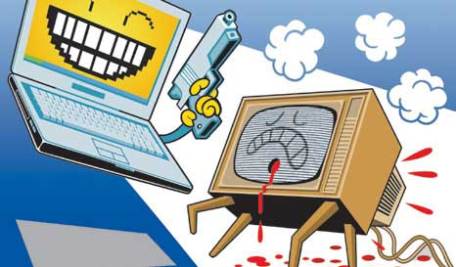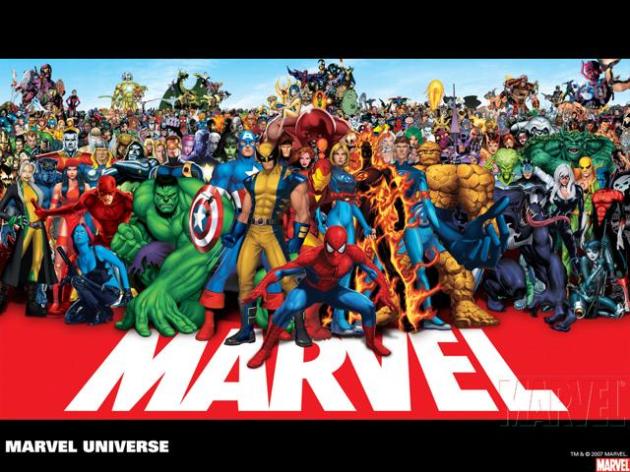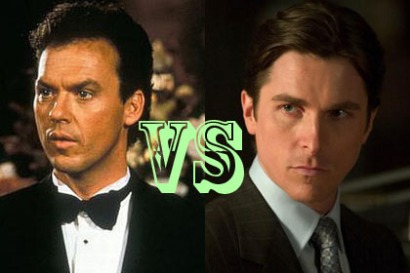In the era of globalization and interconnectedness it is much easier to communicate across the borders then it was before the invention of the internet. Nowadays communication through the internet, especially with the use of the social media is the most efficient method of communication since the messages are sent and delivered instantaneously. This effective and easily accessible means of communication is used not only for the entertaining but also for the political purposes by various political organizations including the Islamic extremist terrorist organization or ISIS. The members of ISIS are using the online social networks like Twitter, Instagram, Facebook and others to inflict terror in people, to spread their ideology  and to entice the new recruits. Obviously, this modern medium of communication – the use of the social media makes it easier for the terrorists to keep in touch with ISIS’s followers across the globe and to spread their messages instantly with the minimum effort. Unfortunately, various examples from the recent history show that ISIS’s propaganda spread through the online social media appears to be extremely powerful and persuasive.
and to entice the new recruits. Obviously, this modern medium of communication – the use of the social media makes it easier for the terrorists to keep in touch with ISIS’s followers across the globe and to spread their messages instantly with the minimum effort. Unfortunately, various examples from the recent history show that ISIS’s propaganda spread through the online social media appears to be extremely powerful and persuasive.
These three articles Isis has built a global brand using Nutella, celebrity and social media by Hazel Sheffield[1], Who is behind Isis’s terrifying online propaganda operation? by Patrick Kingsley[2] and What is ISIS’ appeal for young people? by Jethro Mullen[3] illustrate the techniques used by ISIS to spread its propaganda through the online social networks. The first article by Sheffield focuses mainly on how the Islamic State extremists use modern marketing techniques through the online social media to choose the right target market and to invite people to join the organization.  Various techniques include using the celebrities like Jihadi John in the posters, showing the famous products like Nutella in the images of the terrorists, uploading the photos of terrorists with cats and others are all used by the members of ISIS to increase the awareness in people and to find more followers across the globe. As Sheffield points out the ISIS members are successfully drawing the “fine line” between raising their public profiles and maintaining their underground status and with the use of the right target market spreading their propaganda worldwide.
Various techniques include using the celebrities like Jihadi John in the posters, showing the famous products like Nutella in the images of the terrorists, uploading the photos of terrorists with cats and others are all used by the members of ISIS to increase the awareness in people and to find more followers across the globe. As Sheffield points out the ISIS members are successfully drawing the “fine line” between raising their public profiles and maintaining their underground status and with the use of the right target market spreading their propaganda worldwide.
The second article by Kingsley discusses how extremist jihadists use social media, various apps, and even the full-length movie “The Clanging of the Swords IV” to spread their messages and to intimidate their enemies. As Kingsley argues ISIS’s successful propaganda makes the fighting easier as “in wars gone by, advancing armies smoothed their path with missiles while Isis does it with tweets and a movie”. ISIS has thousands of Twitter followers and their posts are spread with the use of the mushroom effect – the content is reposted by several accounts to guarantee that it stays online. According to Kingsley the terror that ISIS is inflicting in people through the social media is exaggerated as ISIS is less powerful than  showed in the social media. All these images of the cold-blooded massacres, tortured victims, and wounded children are examples of ISIS’s slick use of the social media which makes the group seem more powerful than it is in reality. All these social media activities are made to scare and alarm people and to win the ongoing propaganda war.
showed in the social media. All these images of the cold-blooded massacres, tortured victims, and wounded children are examples of ISIS’s slick use of the social media which makes the group seem more powerful than it is in reality. All these social media activities are made to scare and alarm people and to win the ongoing propaganda war.
The third article by Mullen greatly centers on the target market of these above mentioned propaganda. As the author argues ISIS has chosen the right target market to address to the young people and teenagers who are more likely to become converted to extremist Islam. All these promises for the utopian life and rewards in case of conversion seem more attractive to the teenagers whose personalities are not yet molded and who are yet in search of their identities. Mullen quotes Sasha Havlicek according to whom “We’re seeing young women from across Western countries both expressing their support for and migrating to Syria now in totally unprecedented numbers”. These numerous examples of the young females’ attraction to this extremist Islamic organization are the results of the successful propaganda that ISIS is constantly communicating.
The recent history showed various examples of young people converting to extremist Islam. 19-years-old Aqsa Mahmood[4] who left Scotland joined ISIS and married one of the terrorists, three teenage Colorado girls who wanted to become extremists[5] and other three young females from Denver who attempted to join ISIS[6] are just the few examples from the group of the young people who are attracted to these extremist terrorists. Why is ISIS’s propaganda so successful in luring the people living in Europe and in the United States? There is no single answer to this question but it is obvious that ISIS’s well-planned, well-targeted, and slick propaganda spread through the online social media greatly affects people and their perception of the Islamic extremist terrorist organization.
girls who wanted to become extremists[5] and other three young females from Denver who attempted to join ISIS[6] are just the few examples from the group of the young people who are attracted to these extremist terrorists. Why is ISIS’s propaganda so successful in luring the people living in Europe and in the United States? There is no single answer to this question but it is obvious that ISIS’s well-planned, well-targeted, and slick propaganda spread through the online social media greatly affects people and their perception of the Islamic extremist terrorist organization.
[1] http://www.independent.co.uk/news/business/news/isis-has-built-a-global-brand-using-nutella-celebrity-and-social-media-10095915.html
[2] http://www.theguardian.com/world/2014/jun/23/who-behind-isis-propaganda-operation-iraq
[3] http://edition.cnn.com/2015/02/25/middleeast/isis-kids-propaganda/
[4] http://edition.cnn.com/2015/02/23/world/scottish-teen-isis-recruiter/index.html
[5] http://edition.cnn.com/2014/11/12/us/isis-teen-recruitment/
[6] http://edition.cnn.com/2014/10/22/us/colorado-teens-syria-odyssey/index.html?iref=allsearch







 actors who were protesting the absurdity of the Soviet regime. The attempt seemed unsuccessful and the hijackers could not reach their goal – the pilot landed back in Tbilisi. As one of the conspirators explained during the trial, all they wanted to “have a better life and live in a free society.” They received the death penalty and were shot in 1984. Nobody knows their place of burial. Later, one of the hijacker’s diary was published where she writes how she wanted to listen to Pink Floyd, wear blue jeans, and freely express herself without the fear of being murdered. This accident became extremely popular and was later named “The Jeans Generation” (Jinsebis Taoba). Famous writers wrote about the “The Jeans Generation” and even today it is staged in the private Liberty Theater in Tbilisi.
actors who were protesting the absurdity of the Soviet regime. The attempt seemed unsuccessful and the hijackers could not reach their goal – the pilot landed back in Tbilisi. As one of the conspirators explained during the trial, all they wanted to “have a better life and live in a free society.” They received the death penalty and were shot in 1984. Nobody knows their place of burial. Later, one of the hijacker’s diary was published where she writes how she wanted to listen to Pink Floyd, wear blue jeans, and freely express herself without the fear of being murdered. This accident became extremely popular and was later named “The Jeans Generation” (Jinsebis Taoba). Famous writers wrote about the “The Jeans Generation” and even today it is staged in the private Liberty Theater in Tbilisi. the Spanish American War? What are the possible factors responsible for this change? These questions can only be answered after looking back in time and understanding the initial function of the yellow journalism during the Spanish American War.
the Spanish American War? What are the possible factors responsible for this change? These questions can only be answered after looking back in time and understanding the initial function of the yellow journalism during the Spanish American War.



 nation’s capital” by
nation’s capital” by  freely to the press without any governmental restrictions. In the modern era everybody can be a journalist, expressing his/her opinions through the internet medium. The power over the press is shifted from the authorities to the ordinary people. The raise of the private or the independent media, which has no direct control from any political party, loosened the authoritative domination over the press. In contrast to that of the 19th century, the press of the today’s era is much more liberated from the governmental ties.
freely to the press without any governmental restrictions. In the modern era everybody can be a journalist, expressing his/her opinions through the internet medium. The power over the press is shifted from the authorities to the ordinary people. The raise of the private or the independent media, which has no direct control from any political party, loosened the authoritative domination over the press. In contrast to that of the 19th century, the press of the today’s era is much more liberated from the governmental ties. promote the existence of the free press which is liberated from the state’s interference, there are still many, non-democratic countries in the modern world in which the government has the absolute power over the press. In these non-democratic counties like North Korea the freedom of press is a totally unknown phenomenon. All the mediums of communications are state-run organizations, promoting the existing ultimate political authority or the power. Similarly to the 19th century’s press, the politicians have the absolute domination over what is written in the press and the level of corruption in the media industry of these non-democratic countries is extremely high.
promote the existence of the free press which is liberated from the state’s interference, there are still many, non-democratic countries in the modern world in which the government has the absolute power over the press. In these non-democratic counties like North Korea the freedom of press is a totally unknown phenomenon. All the mediums of communications are state-run organizations, promoting the existing ultimate political authority or the power. Similarly to the 19th century’s press, the politicians have the absolute domination over what is written in the press and the level of corruption in the media industry of these non-democratic countries is extremely high.


















